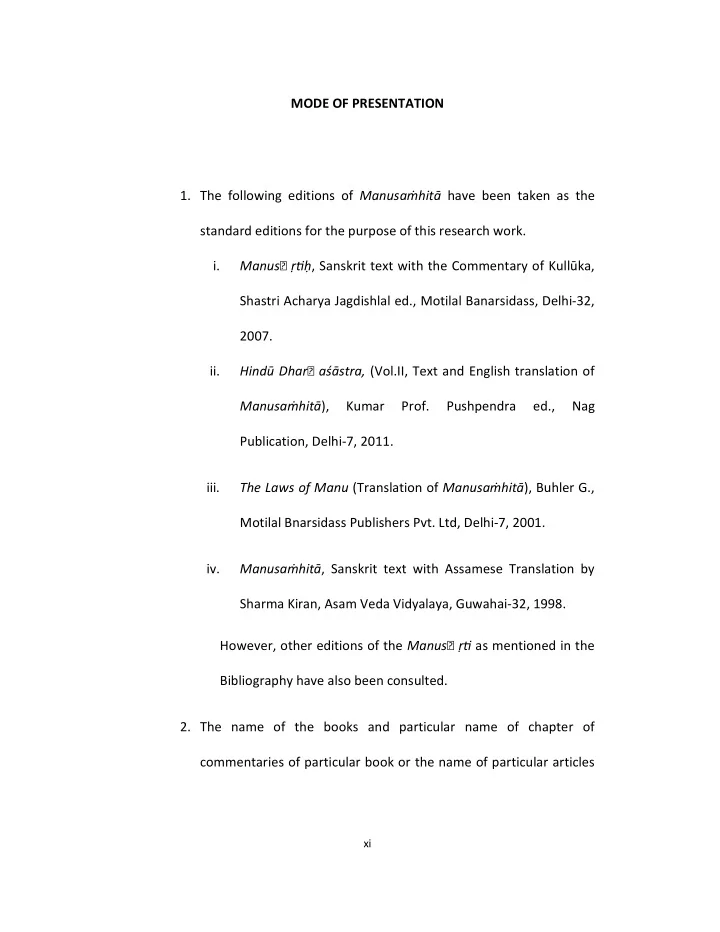

MODE OF PRESENTATION 1. The following editions of Manusaṁhitā have been taken as the standard editions for the purpose of this research work. i. Manusm ṛ�ḥ , Sanskrit text with the Commentary of Kullūka, Shastri Acharya Jagdishlal ed., Motilal Banarsidass, Delhi-32, 2007. ii. Hindū Dharm aśāstra, (Vol.II, Text and English translation of Manusaṁhitā ), Kumar Prof. Pushpendra ed., Nag Publication, Delhi-7, 2011. iii. The Laws of Manu (Translation of Manusaṁhitā ), Buhler G., Motilal Bnarsidass Publishers Pvt. Ltd, Delhi-7, 2001. iv. Manusaṁhitā , Sanskrit text with Assamese Translation by Sharma Kiran, Asam Veda Vidyalaya, Guwahai-32, 1998. However, other editions of the Manusm ṛ� as mentioned in the Bibliography have also been consulted. 2. The name of the books and particular name of chapter of commentaries of particular book or the name of particular articles xi
are beginning with capital letter in italic form both in the body of the thesis and in the references. 3. Abbreviations are used both in the body of the thesis and in the references typed in normal form. 4. Most of the ancient original and modern works are written in full form in the body of the thesis whereas abbreviated form in the references. Only the abbreviated form of Manusaṁhitā and Ṛgveda are used in the body of the thesis. If the book is used once or twice then abbreviation is not given in the references. 5. Sanskrit words are written in small letter in italic form in the body of the thesis except those words appear at the very beginning of a sentence. Sanskrit quotations are also written in the same form. But in the references those are typed in normal form beginning with the small letters. 6. The words which indicate name of place, particular branch of literature such as Veda, Sm ṛ�, Dharm aśāstra etc. are typed in Italics beginning with the capital letter in the body of the thesis while the same in reference form is same. Italics here are avoided. 7. The main headings along with main points of chapters are given in capital letters in bold form and sub-topics are in only capital xii
letters. Even the Sanskrit words and names of books are also used in the same in capital letters in normal form. 8. All the references with notes are given at the end of every chapter. 9. A few books without editions and year of publication are enlisted in bibliography as the sure could not be traced out. xiii
Recommend
More recommend